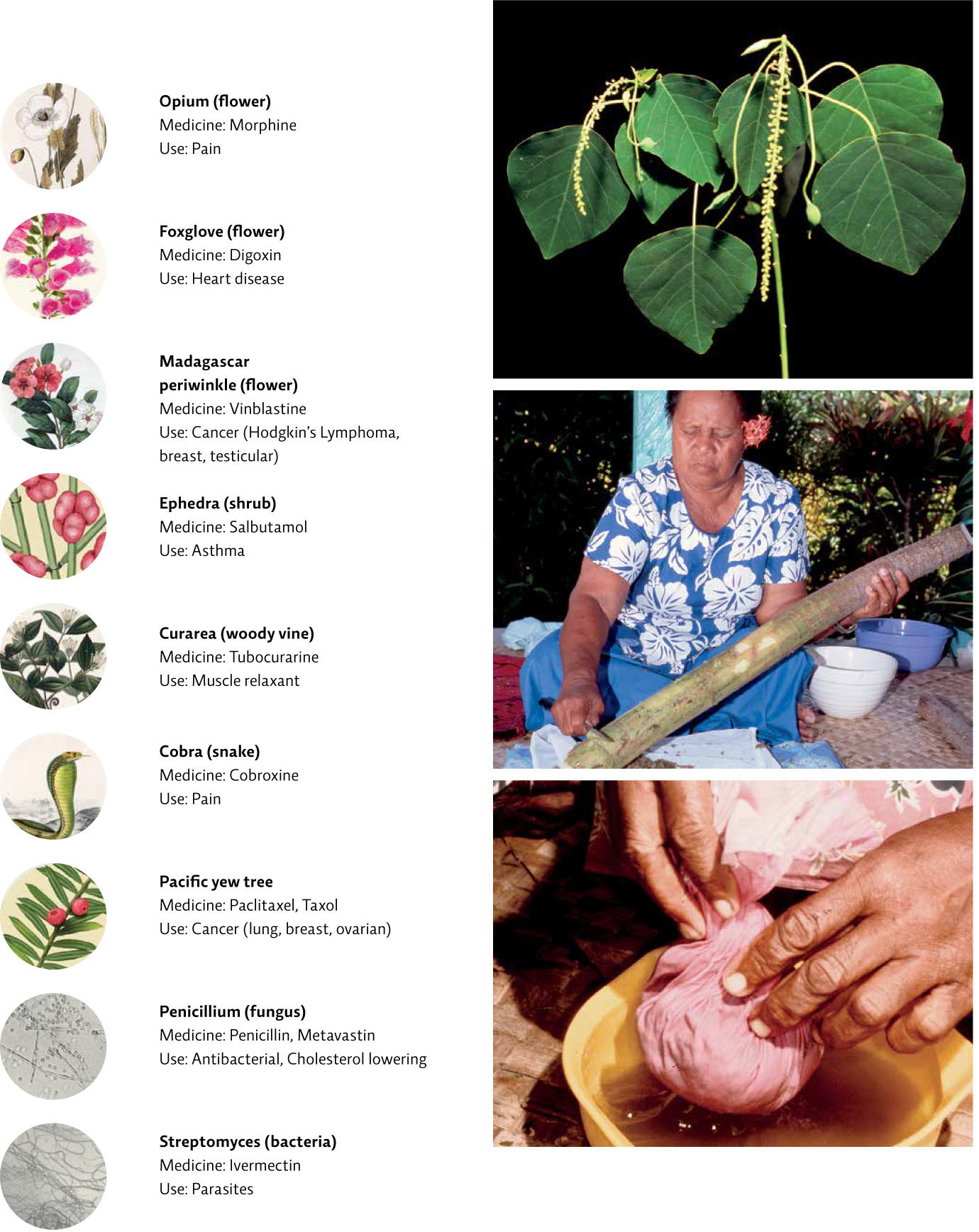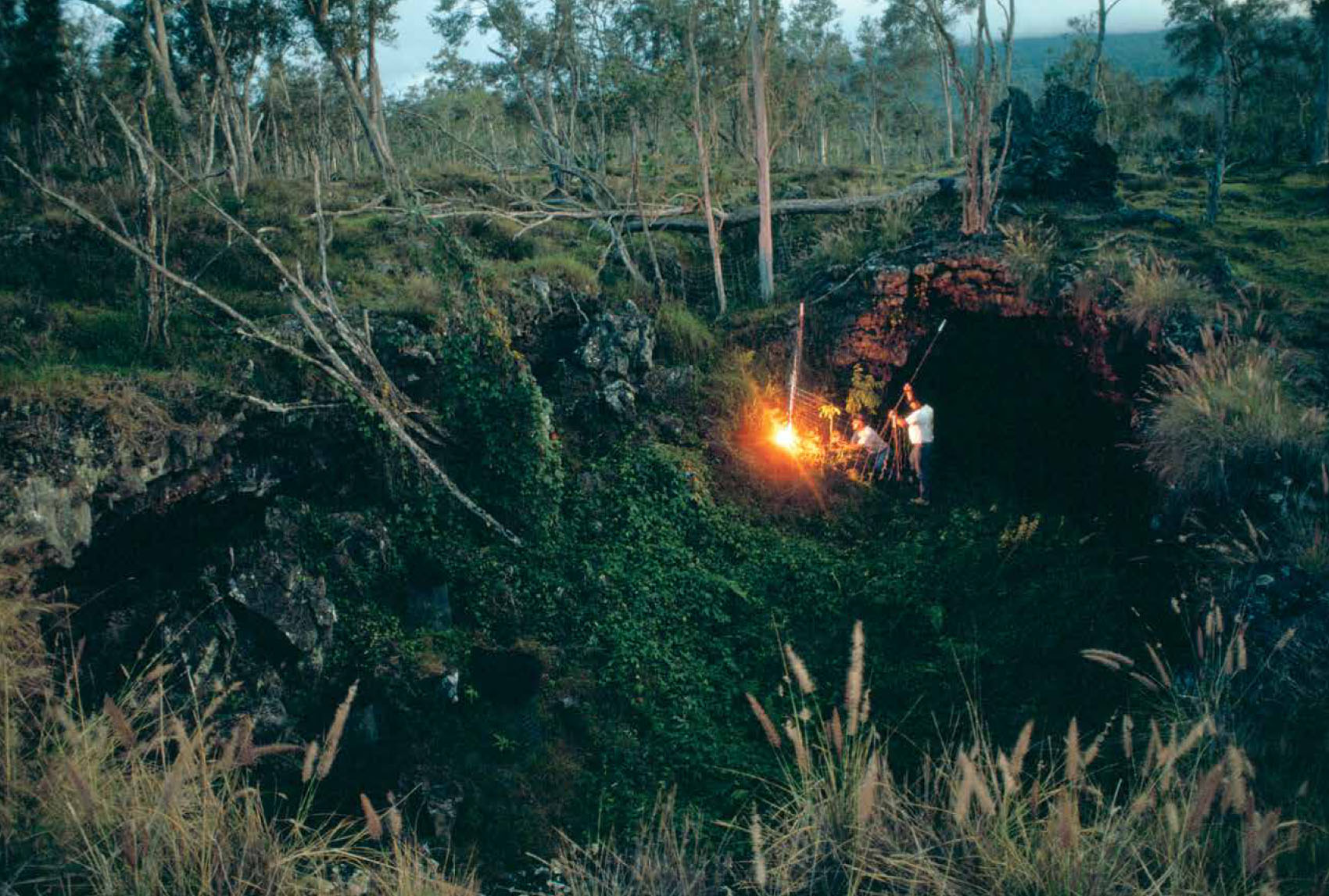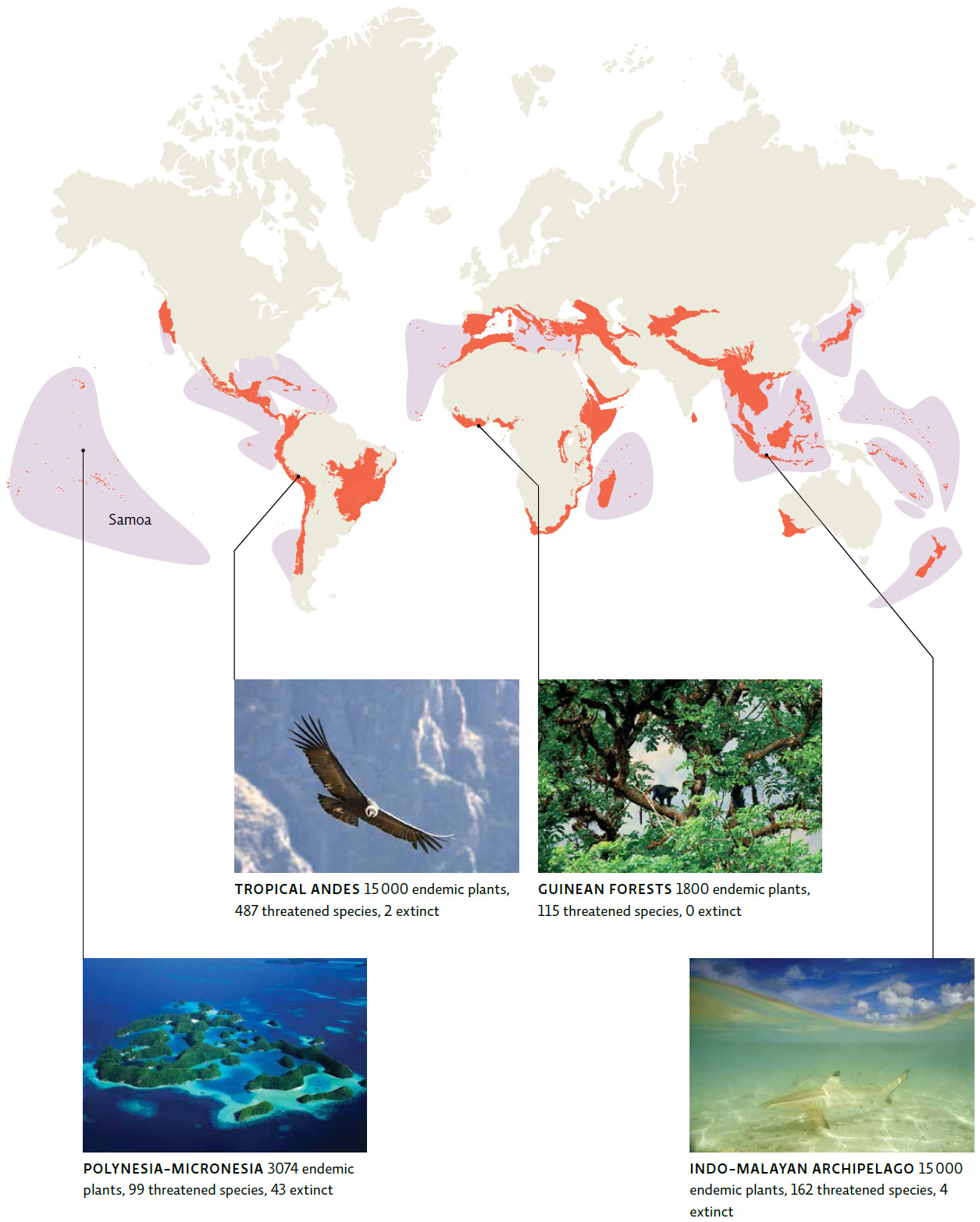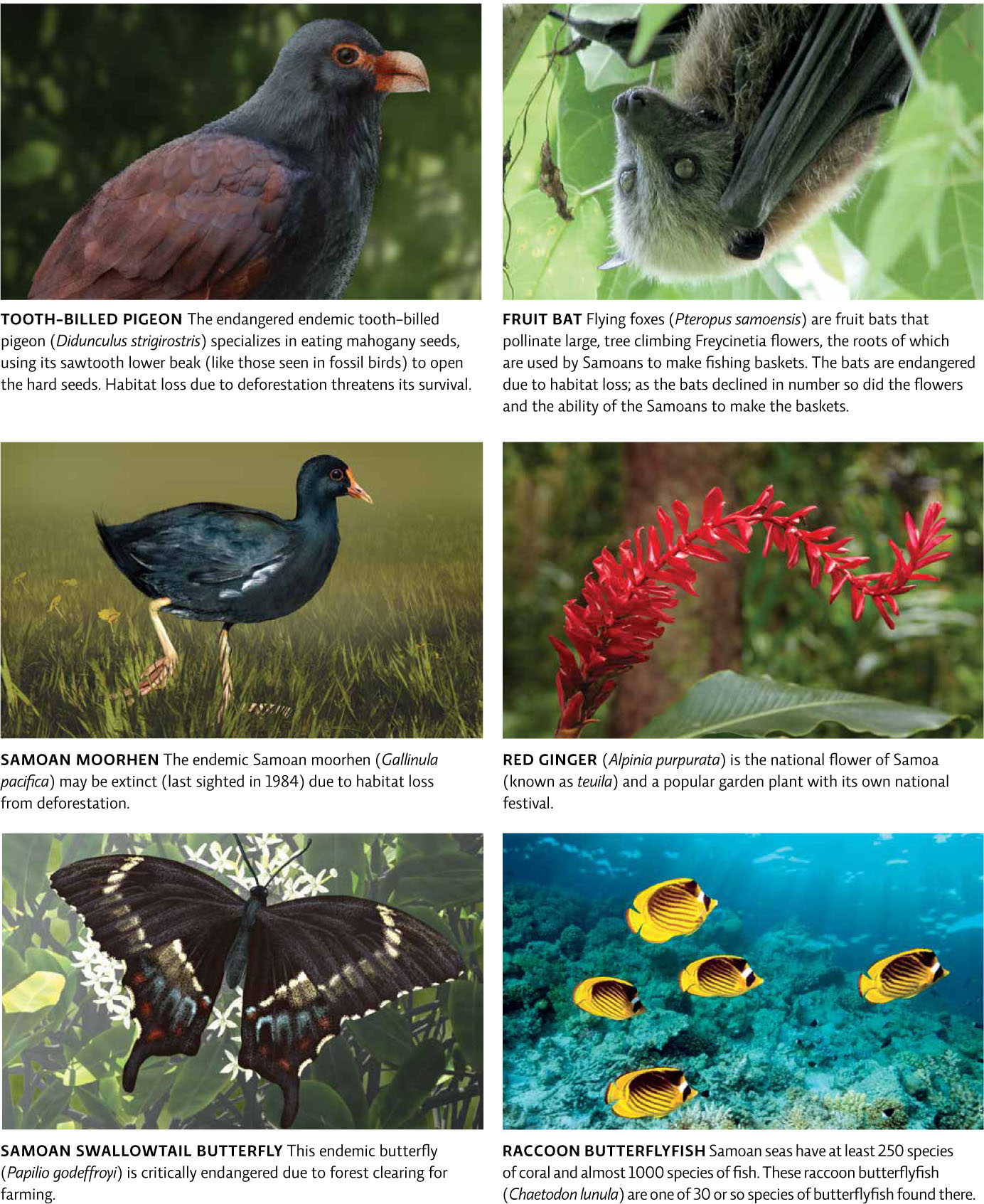9.3 Plants gain medicinal qualities as they adapt to other species.
The tropics are home to roughly 5.3 billion people, or 80% of the world’s population. Because many of the countries in this region are poor, medicinal plants provide both a primary form of health care and a major source of income to local communities. Medicinal plants are one of the most prominent facets of ethnobotany—the study of how different cultures make use of the plants that surround them.
According to the World Bank, the international trade in medicinal plants was worth nearly $100 billion in 2011. Roughly half of all prescription drugs—including some medicine cabinet staples like aspirin, codeine, and most hypertension drugs—were originally derived from plants. And by most accounts, there are many more medical treasures just waiting to be discovered: less than 1% of the world’s 265 000 known flowering species have been tested for their effectiveness against human diseases. “We are barely scratching the surface now,” says Jim Miller, a scientist at the New York Botanical Garden in New York City. [infographic 9.4]

Despite that untapped potential, the role of plants in Western medicine has waxed and waned throughout history. For one thing, the odds are daunting. On average, only 1 in 15 000 compounds will demonstrate the potential to treat a human condition. For most of the modern medical era, finding that 1 compound took an average of 12 years and $300 million—enough to dissuade the most tenacious of scientists.
Roughly half of all prescription drugs—including some medicine cabinet staples like aspirin, codeine, and most hypertension drugs—were originally derived from plants.
Plants were once the biggest source of new medications in Western society. But advances in pharmacology quickly turned scientists’ attention away from the forest and toward the test tube, where they could design molecules from scratch, rather than search for them like needles in a haystack. A few decades ago, scientists predicted that advances in biochemistry would eliminate the need to exploit fragile ecosystems for our own medical needs; they believed any molecule we discovered could easily be replicated in a test tube or Petri dish.
But with the exception of a few remarkable successes, like the cancer drug paclitaxel that is now synthesized in the lab rather than being extracted from the bark of Pacific yew trees where it was first found, that prediction didn’t quite pan out. “An overwhelming number of plant-derived compounds have eluded all attempts to copy,” says Sarah Oldfield, director of the nonprofit Botanic Garden Conservation Initiative. Because copying plant-derived molecules has proven so intractable, modern medicine continues to depend on their availability in nature. And by many accounts, evolution has bested the most apt chemists, resulting in molecules too complex to fathom, let alone replicate. “Mother Nature is the ultimate chemist,” says Oldfield. “Modern chemistry has barely enabled us to copy her creations, so you can imagine the near impossibility of designing them from scratch.”
It’s little wonder. Plant chemicals evolve over eons, as individual plant species strive to fight off predators. Because they can’t run or physically fight, the way animals can, plants employ two main anti-predator strategies: physical defence structures like thorns, thick seed coats, or bark, and chemical weapons, like the ones that ultimately find their way into our medicine cabinets. In short, it’s the diversity of life itself, challenging the plant kingdom in a mind-boggling variety of ways, that spurs such a broad range of protective chemicals, and in so doing, provides us with some precious life-saving medicines. (See Chapter 10 for more on natural selection of adaptive traits.)
In 1988, the villagers of Falealupo were being pressured by the government to build a school. Knowing this, a logging company offered to pay the villagers less than $1 per hectare for the nearby 12 150 hectares forest, where the mamala tree grew most abundantly—just enough to cover school construction costs. Scientists were only beginning to study the mamala bark and Cox knew that any health or financial benefits from the tree would be decades off.
But he also knew that if the loggers had their way, hundreds of other plants with potential medicinal properties might never be found. So he negotiated with the villagers, promising them he would raise the school money himself if they agreed to protect the forest from logging. Then Cox went knocking on the doors of nonprofits and conservation groups back in the United States. Before too many trees were felled, he had scrounged up $85,000—enough money to build the school and spare the forest. It was a rare victory. “It’s common for indigenous people to have to choose between saving a forest or coral reef and building a school or medical clinic,” says Cox. “Because they don’t typically have the resources to do both, they must sacrifice one to pay for the other. And the loss when that happens is often incalculable.”
157
158

This is especially true in the Pacific Islands like Samoa and Hawaii. The region has the highest percentage of threatened and endangered species (those at risk for extinction) of any region on Earth; these species are often specialists that occupy narrow niches. It also contains a high proportion of endemic plants and animals—those that exist nowhere else on Earth. Areas like this that contain a large number of endemic but threatened species are known as biodiversity hotspots. Many hotspots are in tropical regions, where biodiversity abounds. [infographic 9.5]

Islands are particularly vulnerable to species loss since they are isolated from other islands or from the mainland; new individuals who might bring genetic diversity rarely arrive. In Hawaii alone, fully one-half of the indigenous flora faces immediate extinction. Such a high extinction rate threatens the fragile tapestry of life on these islands, from their soil and freshwater supplies to the health and economic future of their residents.
159
160
If a species is extirpated—that is, if it goes extinct in one ecosystem but still exists elsewhere—it is sometimes possible to reintroduce the species by bringing in individuals from a different population. But this is not as easy as it sounds. Local species are adapted to local conditions—they fill an ecological niche, or specific functional role in an ecosystem. Therefore, plants of the same species, but from different global locations, can occupy different niches.
The loss of even a few species can disrupt the connections that the ecological community depends on, triggering a cascade that threatens all the other species in the region. “Simple” ecological communities (ones with relatively few species) are much more affected by a single loss. But even “complex” ecosystems (those with many species and many filled niches) can be gravely imperilled if too many members are lost, especially if keystone species are lost. The loss of half of a native plant community is a loss that few, if any, ecosystems can endure without completely collapsing. Of course, once one ecosystem collapses, a new one may emerge. But such recovery takes a very long time. [infographic 9.6]
